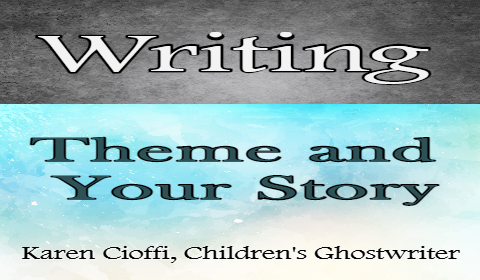Your story is like a puzzle. It takes a number of elements working together to make a memorable story. One of those elements is the ‘theme.’
Theme can be a frightening topic. Do you have a theme in mind before striking the first key? Do you write your first draft and then decide what the theme is? Do you have a problem deciding what the theme is, even after you’re in revisions?
In an article, “What We Talk About When We Talk About Theme,” in the Writer’s Chronicle, May 2010, Eileen Pollack discusses theme:
The concrete elements of any story constitute its plot—Character A, in Village B, is torn by a specific conflict that gives rise to a series of concrete actions through which she relieves that stress. The more general question raised in the reader’s mind by this specific character acting out this specific plot constitutes the story’s aboutness—or, dare I say, it’s theme.
This description of the elements of a story holds true for any fiction work, including children’s stories. The elements, woven together with theme as the foundation, are what make the reader continue turning the pages . . . it’s what makes the reader care.
According to Pollack, “Theme is the writer’s answer to the reader’s rude, So what?” And if the theme is poignant and captures what some or many people actually do, it will allow the reader to recognize the situation and actions. This connection will keep the reader will be engaged. Hopefully, the reader will be able to take the theme, however subtle it is, away with them.
For those worried about the theme affecting the story’s natural flow, Pollack advises deciding on your theme after your first draft. Once you have your theme in hand, go over your story again and again. You can now let the theme subtly permeate your story. Pollack goes on to say, “The most powerful use of theme is the way it allows you to fill in your character’s inner lives.”
Former literary agent Mary Kole, in her blog at Kidlit.com, also sheds light on the worrisome theme:
When you revise, think about what your work is saying. You’ve got to have a reason for writing it. There should be distinct themes and ideas that you could point to as the center of your book. [. . .] Once you know what these are — and you usually won’t until you’ve started revising — you can use them as a lens. [. . .] A theme for your work should color everything in it, subtly, especially the descriptions.
So, there you have it. After you’ve written your story and are working on revisions, your theme should become evident if you haven’t already gotten it. Using it as a “lens” and filtering each paragraph through it, you should be able to convey the theme to the reader.

I’m a working children’s ghostwriter, rewriter, editor, and coach. I can help turn your story into a book you’ll be proud to be the author of, one that’s publishable and marketable.
OTHER HELP I OFFER:
HOW TO WRITE A CHILDREN’S FICTION BOOK
A DIY book to help you write your own children’s book.
PICTURE BOOK, CHAPTER BOOK, MIDDLE GRADE COACHING
Four to twelve-week coaching programs.
WRITERS ON THE MOVE SELF-PUBLISHING HELP
Self-publishing help for children’s authors; from polished manuscript to published book.
You can contact me at: kcioffiventrice@gmail.com. Or give me a call at 347—834—6700. (Please leave a message- I’ll get back to you as soon as I can.)

The Foundation of a Children’s Story
Characters or Story – Which Comes First?
Amazon Author Central Page and Book Page


2 thoughts on “Theme and Your Story”